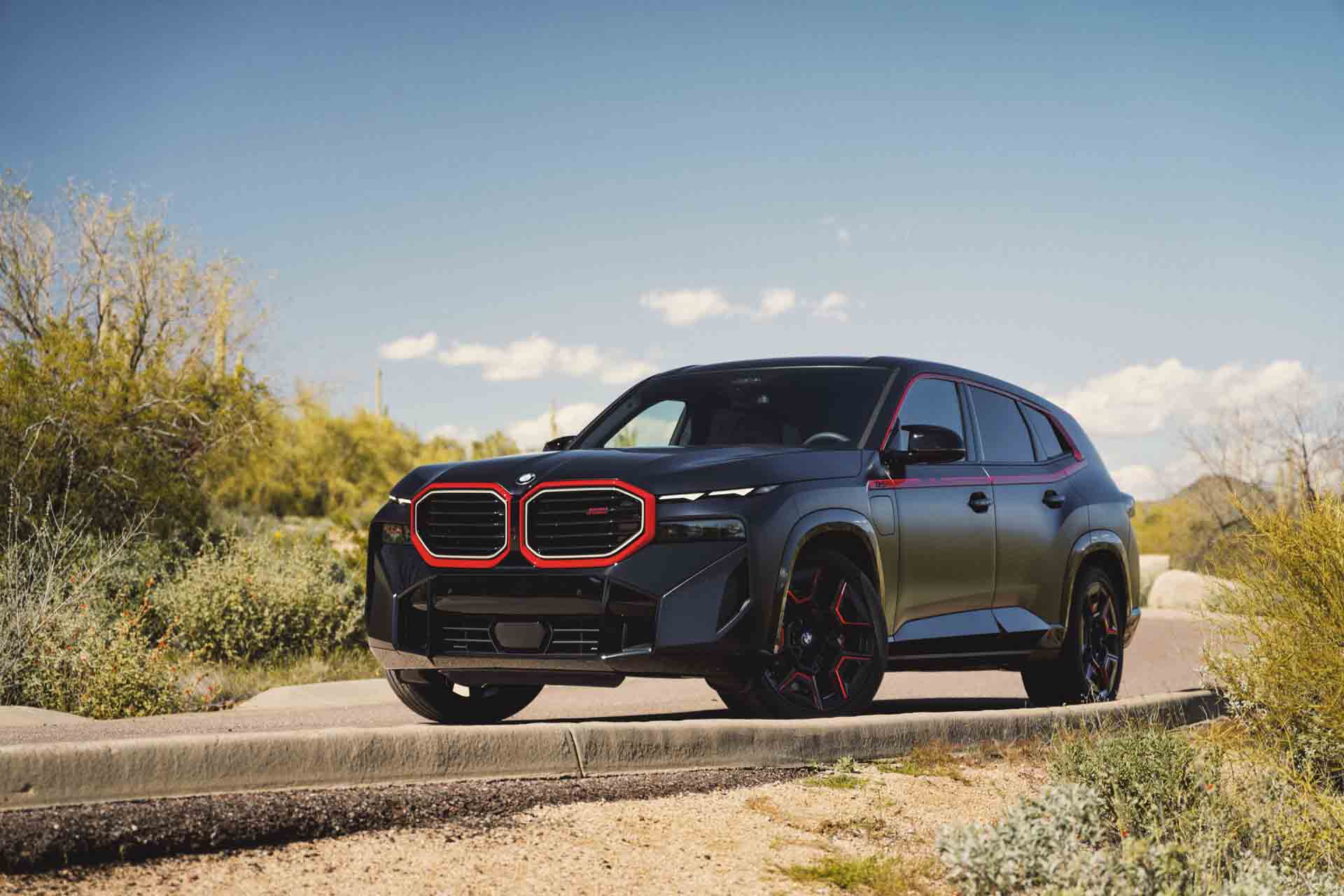The XM’s plug-in drivetrain excels at highway speeds, and annoys at urban paces. It’s an 8 for its acceleration and ride, but with more asterisks than an MLB records list.
Every XM has all-wheel drive. The system doles out power through a set of modes—4WD, 4WD Sport, and 4WD Sand—which alter that power delivery for the road conditions. There’s an electronic locking rear differential, too, which shifts power across the rear axle to help the XM carve corners more effectively. It’s a boon, for a vehicle so wide and long.
How fast is the BMW XM?
Buckle up, because the XM’s powertrain takes some explaining. BMW bolts a twin-turbo 4.4-liter V-8 to an electric motor fed by a 25.7-kwh battery pack to churn out 644 hp and 590 lb-ft of torque. Coupled with an 8-speed automatic and rear-biased all-wheel drive, the XM can sizzle to 60 mph in 4.1 seconds and reach a top speed of 155 mph—unless you opt into the M Driver’s Package, which lifts top speed to 168 mph.
For 2024, BMW has added the XM Label, which it once called the Label Red. With a twist to the turbo boost, the XM Label puts out 738 hp, good for a 0-60 mph time of 3.7 seconds and a top speed of up to 175 mph.
In either model, the battery in the plug-in hybrid system can permit up to 31 miles of all-electric driving, and an EV-only top speed of 87 mph, all accompanied by a soundtrack authored by composer Hans Zimmer.
How does the BMW XM drive?
Prepare for a frustrating tussle with a dual-personality machine, one part frugal city-hopper and one part unrestrained interstate hypertrain. The XM has all the ingredients to make plug-in hybrid tech palatable to the well-heeled, but it ends up stumbling on its own Achilles’ heels. It makes a stronger case for the supremely smooth though less louche iX wagon than it does for itself.
At lower speeds, the XM engages a default Hybrid mode that blends electric and gas power as any other hybrid would. An eControl mode lets the driver lock in the battery’s state of charge, to preserve EV range for urban driving where zero emissions might be desirable, if not mandated.
Most low-speed driving will tempt use of the Electric mode. Lock it in, and the XM propels itself in mostly hushed tones—but it also deploys a brake-hold feature that jerks the XM at stoplights launches. Then the whirring, programmed EV noise builds, and can’t be edited out.
Like other BMW M models, the XM has M1 and M2 buttons for driver-programmed behavior. Any attempt to use them or floor the accelerator flips the XM into Hybrid mode, which must then be re-toggled into Electric mode. It also defaults to a sport exhaust that’s numbing after only a few miles.
All sorts of subtle penalties come into play with the efficiency plays here—down to the surround-view camera system. Select EV mode, then reverse, and the screen persists on a fancy drivetrain splash screen to show where power is headed, instead of flicking over to the direly needed view to the car’s rear quarters.
While it outperformed its EPA-rated electric range—I saw more than 38 miles on a mid-speed, flat route—the XM doesn’t ride well when it goes slow, especially as it tries to conserve energy in battery mode. It’s outfitted with rear-axle steering and adaptive dampers, but conventional steel springs instead of a four-corner air suspension—and massive 23-inch wheels (22s are available). All that tries to cope with 6,062 pounds of curb weight, and it fumbles over speed bumps and pavement seams, with lots of head toss and thudding impacts. It may be due to its standard active anti-roll bars that suppress natural body lean, stiff tuning, and mostly, those massive wheels.
The jiggles relax at highway speeds, and so does the XM’s drivetrain. It seems to forget its plug-in pieces, and soars with the slightest slip of the accelerator. Curb weight neutralizes even larger bumps once it’s at cruising speed, and the rear-axle steering that seems too ambitious in parking lots loosens up, giving the XM back its classically fluid BMW feel. The straighter and faster the road, the better the XM feels.


